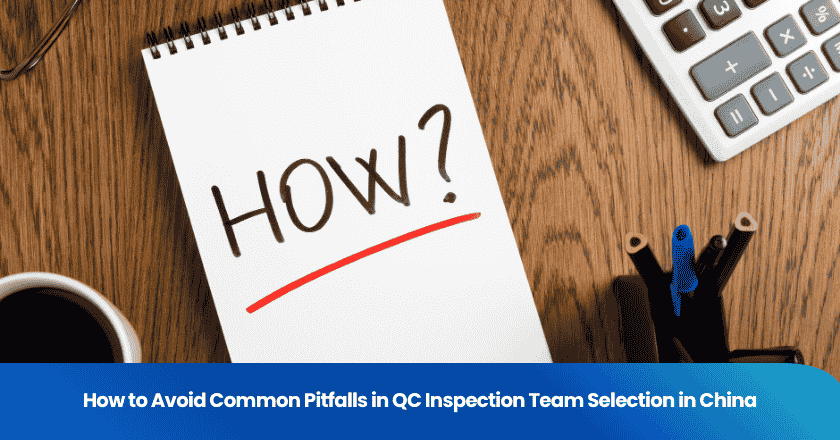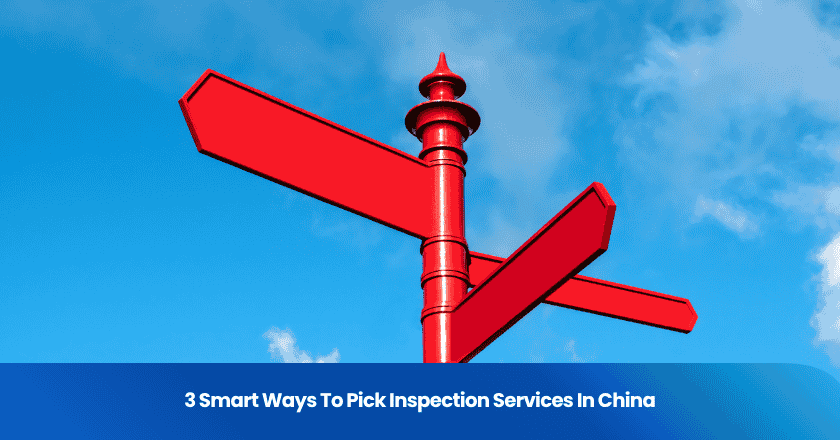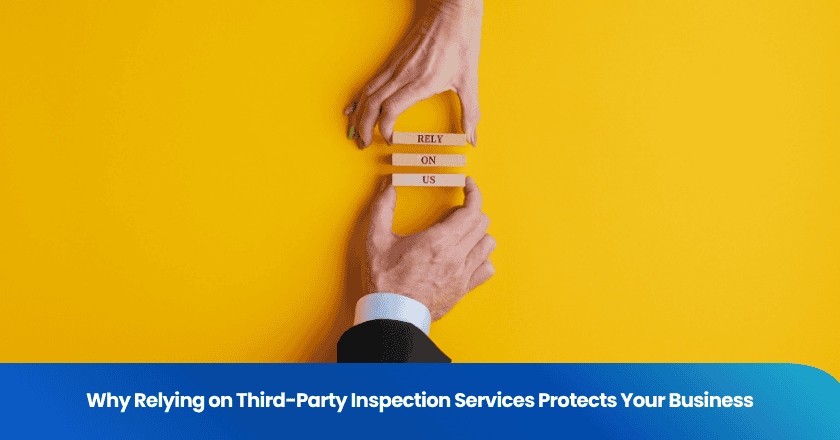
You want assurance that your goods meet every specification before they leave China. The best pre shipment inspection company in China earns its reputation through consistent service quality, industry expertise, and reliable results. Pre-shipment inspection plays a vital role for importers like you by providing a final check before shipping. This process helps you avoid receiving defective products and ensures your order matches your expectations.
- Inspections identify serious quality issues.
- They confirm goods meet required standards.
- You gain peace of mind regarding quantity and quality.
Key Takeaways
- Pre-shipment inspections ensure your products meet specifications, reducing the risk of defects and financial loss.
- Choose a reputable inspection company with a strong track record and local presence for reliable service.
- Request detailed inspection reports to gain insights into product quality and compliance with standards.
- Prepare a comprehensive checklist and communicate clearly with your supplier to enhance the inspection process.
- Avoid common pitfalls by ensuring proper training for inspectors and maintaining consistent inspection methods.
Best Pre Shipment Inspection Company in China
Why Choose the Best
Selecting the best pre shipment inspection company in China gives you a significant advantage in global trade. You need a partner that consistently delivers accurate results and upholds strict quality standards. The best pre shipment inspection company in China stands out because it combines deep industry knowledge with a proven track record. You can trust this provider to identify defects early, which saves you time and money. Many e-commerce brands rely on third party inspection companies as a critical checkpoint in their quality assurance process. This approach helps maintain product reliability and reduces the risk of costly recalls.
A robust quality control system is essential for every importer. Even a small defect rate can lead to customer dissatisfaction and operational challenges. The best pre shipment inspection company in China uses in-process inspections to catch issues before shipment. This method is more cost-effective than discovering problems after your goods have left the factory. You benefit from peace of mind, knowing your products meet your specifications and industry standards.
Tip: Early detection of defects during production helps you avoid expensive rework and ensures your shipment arrives as expected.
Key Service Features
You should look for specific features when evaluating the best pre shipment inspection company in China. These features ensure you receive reliable, transparent, and professional service. The following table summarizes the most common criteria used to evaluate inspection companies:
| Criteria | Description |
|---|---|
| Agency Background | Check the agency's experience in your business sector and with similar products. |
| Laboratory Testing Capabilities | Review their testing equipment and ability to provide reliable results. |
| Quality Control Procedures | Ensure they follow strict procedures to maintain high standards. |
| Reputation | Research online reviews and request references from previous clients. |
| Local Presence | Confirm they have offices and staff in China for efficient communication and service. |
Performance metrics also play a key role in your decision. The best pre shipment inspection company in China maintains high on-time delivery rates, often above 97%. High reorder rates indicate strong client retention. You should request sample inspection reports to assess their transparency and methodology. Always confirm operational addresses and ask for client references to verify their credibility.
You gain additional value when your inspection partner offers certification services. This ensures your products comply with international regulations and standards. Reliable companies provide clear communication, detailed reports, and responsive support throughout the inspection process.
l Key features to expect:
a. Comprehensive quality control procedures
b. Advanced laboratory testing capabilities
c. Transparent reporting and documentation
d. Strong local presence for efficient service
e. Proven reputation and client satisfaction
Choosing the best pre shipment inspection company in China means you receive dependable results, minimize risks, and protect your business reputation.
Pre-Shipment Inspection Essentials
What Is Pre-Shipment Inspection
You need to understand the core purpose of pre-shipment inspection before your goods leave the factory. This process involves a detailed assessment of products to verify that they meet your specifications and international standards. Pre-shipment inspections typically occur when production is complete but before shipment. You benefit from a thorough review that covers every critical aspect of your order.
A standard pre-shipment inspection includes several essential components:
- Product specifications: Inspectors verify dimensions, weight, material, and color.
- Quantity check: You confirm the correct number of units matches your purchase order.
- Workmanship and quality: Inspectors look for defects such as poor assembly or scratches.
- Functional testing: You ensure electronics or machinery work as intended.
- Packaging: Inspectors check packaging strength and compliance with requirements.
- Labelling: You confirm labels are accurate and include necessary information.
- Safety standards: Inspectors verify compliance with destination country regulations.
- Customer requirements: You ensure special requests, such as branding, are fulfilled.
- Sampling plan: Inspectors follow ISO 2859-1 Level II to represent batch quality.
Pre-shipment inspections follow international standards and local regulations. The WTO’s Agreement on Pre-shipment Inspection requires documentation for customs in some countries. You must stay aware of legal requirements to avoid delays or penalties.
Why It Matters for Importers
Pre-shipment inspection protects your business from costly mistakes. You avoid receiving defective products and reduce the risk of financial loss. Smart importers use pre-shipment inspections as a final safeguard to ensure products match order specifications.
Common issues detected during inspection include:
| Common Issues Detected | Description |
|---|---|
| Insufficient Training for Inspectors | Critical defects may be missed, leading to non-compliance. |
| Inconsistent Inspection Methods | Results can vary if inspectors use different techniques. |
| Inadequate Sample Size | Small samples may not represent the entire shipment. |
| Overlooking Packaging and Labeling | Neglect can cause damage or regulatory problems. |
| Ignoring Environmental and Social Compliance | Fines and reputation damage may result. |
| Relying Solely on Visual Inspections | Non-visible defects may go undetected. |
| Inadequate Documentation | Poor records can lead to disputes. |
| Lack of Communication with Suppliers | Misunderstandings may cause quality issues. |
| Skipping Follow-Up Inspections | Unresolved issues can recur in future shipments. |
Pre-shipment inspections help you reduce returns and customer complaints. You gain assurance that your products meet industry standards and legal requirements. Identifying defects before shipment protects your investment and maintains your brand reputation. Products that fail to meet expectations can lead to returns and damage your business relationships. Pre-shipment inspection addresses these risks and ensures you receive quality goods.
Tip: Always request detailed inspection reports and maintain clear communication with your supplier to maximize the value of pre-shipment inspections.
Comparing Top Inspection Companies
Evaluation Criteria
When you compare quality inspection companies in China, you need clear standards. The following table outlines the top five criteria you should use for evaluating inspection providers:
| Criteria | Description |
|---|---|
| Experience | Firms should have at least 5 years of experience and a minimum of 20 staff for stability. |
| Response Times | Ideal response times should be 4 hours or less. |
| On-time Delivery Rates | Target on-time delivery rates should exceed 97%. |
| Client Reorder Rates | A reorder rate above 30% indicates consistent client satisfaction. |
| Industry Standards | Ensure companies have ISO 9001 certification and expertise in relevant product standards. |
You should also request sample inspection reports and consider surprise audits to verify quality verification processes. These steps help you select the right partner for pre-shipment inspections and supplier assessments.
Unique Advantages
Leading quality inspection companies in China set themselves apart through technology and expertise. Many now use AI and IoT to improve inspection accuracy and efficiency. Strategic alliances with local and international firms allow for better technology sharing and broader market reach. You benefit from customer-centric solutions, including tailored pre-shipment inspections and integrated supplier assessments.
The best providers offer several strengths:
| Strengths | Description |
|---|---|
| Dedicated Inspectors | Full-time inspectors ensure consistent quality and accountability. |
| Wide Product Coverage | Technical expertise spans many product categories. |
| Transparent Pricing | Competitive rates with no hidden costs. |
| Fast Reporting | Reports delivered within 24 hours. |
| Robust Compliance | Strong anti-bribery and compliance policies. |
You can expect the average cost for pre-shipment inspections to be about $200 per day, making these services accessible for most importers.
Other Leading Providers
Other quality inspection companies in China also offer reliable pre-shipment inspections. They maintain high standards, quick response times, and transparent communication. Many have strong local teams and advanced laboratory capabilities. You should always review their compliance policies and reporting practices. Comparing these features ensures you choose a provider that matches your business needs and helps you avoid costly mistakes.
Tip: Always compare multiple inspection companies before making your final decision. This approach helps you secure the best value and service for your shipments.
Inspection Process Overview
Step-by-Step Process
You need a clear understanding of how a typical pre-shipment inspection unfolds. The process begins when you schedule the evaluation and provide detailed product information. Inspectors then create a tailored checklist that addresses your product’s unique features and regulatory requirements. This preparation ensures that no critical aspect is overlooked.
On the day of the inspection, inspectors visit the factory and assess the production environment. They use advanced evaluation technologies to increase accuracy and efficiency. A thorough review of the manufacturing process helps identify potential risks before shipment. You benefit from a systematic approach that covers every detail, from initial planning to final reporting.
To enhance the effectiveness of the inspection, you should prepare a comprehensive checklist and arrange the evaluation in advance. Clear communication with all parties involved prevents misunderstandings and ensures everyone works toward the same goal. This proactive approach reduces the risk of last-minute issues that could compromise the thoroughness of the inspection.
Quality and Compliance Checks
During the final inspection, quality control teams focus on several mandatory checks. They examine the quality, quantity, packaging, and labeling of finished products to ensure compliance with your requirements and the standards of the importing country. The process includes product testing at multiple stages to confirm that items meet functional and safety expectations.
| Step | Description |
|---|---|
| 1 | Quantity Verification: Inspectors randomly select cartons or pieces and confirm the total matches your order. |
| 2 | Workmanship Check: They look for defects and evaluate appearance, stitching, and finishing. |
| 3 | Product Specifications: Inspectors measure dimensions, weight, and compare with approved samples. |
| 4 | Labelling & Packaging: They verify packaging materials, barcodes, and shipping marks. |
| 5 | On-site Testing: Product testing includes drop tests, carton strength, and functional checks. |
| 6 | Final Report: Inspectors document findings, categorize defects, and provide a pass/fail status. |
You should pay attention to the types of defects identified during product testing. Critical defects make products unsafe or unusable. Major defects affect function or appearance and may cause customer dissatisfaction. Minor defects are small issues that do not impact usability.
Inspection companies also ensure compliance with international trade regulations. They verify that your products meet recognized standards such as ISO and ASTM. This process builds trust in the global supply chain and helps you enter new markets with confidence.
Tip: Consistent product testing and thorough inspection protect your business from costly recalls and strengthen your reputation in international trade.
Working with the Best Company
Booking Steps
You can streamline your experience by following a clear booking process when arranging a pre-shipment inspection. Start by selecting your inspection type and providing essential details, such as your supplier's name, contact, telephone number, and 3-7 specific checkpoints. Booking at least two working days in advance ensures inspector availability and smooth coordination with your supplier. The process typically follows these steps:
| Step | Description |
|---|---|
| 1 | Select your inspection type and provide details |
| 2 | Review and approve the inspection plan |
| 3 | Professional inspectors visit the facility |
| 4 | Receive a detailed report with photos within 24 hours |
Clear communication and accurate information help you avoid delays and ensure the inspection covers all your requirements. Many importers also request factory audits during this stage to verify supplier reliability.
Maximizing Value
To get the most from your inspection and factory audits, you should:
1. Understand your inspection requirements to avoid unnecessary services.
2. Choose the right inspection partner to save costs.
3. Consolidate shipments to lower average inspection costs.
4. Optimize production scheduling to minimize delays.
5. Implement quality control measures to reduce defects.
6. Use technology for efficient inspection management.
7. Negotiate inspection fees for better rates.
8. Plan for seasonal demand to avoid higher costs.
You can further enhance value by combining inspection with factory audits. This approach gives you a comprehensive view of both product quality and supplier capability.
Tip: Use clear and concise language in all documentation. Familiarize yourself with trade terms and work with professionals who understand local customs.
Common Pitfalls
Many importers face challenges when working with inspection companies and arranging factory audits. Common pitfalls include:
1. Lack of preparation, which leads to missed expectations.
2. Insufficient training for inspectors, risking overlooked issues.
3. Relying on subjective judgment instead of objective criteria.
4. Inconsistent inspection methods, causing unreliable results.
5. Overreliance on technology, which cannot replace human expertise.
You can avoid these pitfalls by preparing thoroughly, ensuring inspectors have proper training, and maintaining consistency in your factory audits and inspection processes.
You want a pre-shipment inspection partner that delivers consistent results and protects your business. The best choice stands out for detailed checklists, independent inspections, and supplier performance tracking, as shown below:
| Key Strength | Benefit for You |
|---|---|
| Comprehensive QC Checklists | All specifications verified |
| Transparent Reporting | Unbiased, clear inspection results |
| Supplier Tracking | Reliable, high-quality suppliers identified |
| Cost-Effectiveness | Lower risk of costly recalls |
Thorough inspections help you avoid defects, maintain quality, and build trust with suppliers. You reduce risks and ensure your products meet all requirements.
Common concerns include missing defects, delivery delays, and compliance issues. You can address these by following a proven inspection process:
6. Meet with the factory manager.
7. Select samples using AQL standards.
8. Conduct special and functional tests.
9. Verify packaging, labeling, and barcodes.
10. Review a detailed inspection report.
Take these steps to secure reliable inspection services and strengthen your import operations.
FAQ
What is the typical duration of a pre-shipment inspection in China?
You can expect most pre-shipment inspections to take one full working day. Complex products or large orders may require additional time. Advance booking helps ensure timely completion.
How do you receive inspection results?
You receive a detailed inspection report, usually within 24 hours after the inspection. The report includes photos, defect findings, and a clear pass or fail status for your shipment.
Can you attend the inspection in person?
Yes, you can attend the inspection. Many companies allow importers or their representatives to observe the process. This helps you gain firsthand insight into product quality and factory conditions.
What documents should you prepare before booking an inspection?
You should prepare your purchase order, product specifications, packaging requirements, and any special instructions. Providing clear details ensures the inspection covers all your needs.
Grow your business with TradeAider Service
Click the button below to directly enter the TradeAider Service System. The simple steps from booking and payment to receiving reports are easy to operate.




